A Naturally Perspicacious View of the World
Jacqueline Donachie
Art has many essences. One of the rarest is the joy of being alive, a sumptuous wonder about the way people look, how they dress and pose themselves in public, fantasizing out loud, being bouquets of our strange, strange relation to life, each other, and this passing moment.
I have known Alan Dimmick longer than I have been an artist. We first met in the back room of Back Alley burger restaurant in Ruthven Lane in Glasgow; burgundy walls, sticky carpet, end of the eighties. He was announced as Eric’s photographer pal who was moving back from ‘the country’. We waited tables and I very much enjoyed his chat and his music; he had a vast, legendary, eclectic record collection of which the aforementioned Eric used to make some exemplary mix tapes that got us all through a long Saturday night, and a broad range of interests from 1950s Americana to bird watching and ham radio. Through the mix tapes I discovered a world of music new to me; The Roches, Hank Williams, Desmond Deker to name a few, their random ordering something that went on to colour soundworks I made in the early 1990s. Part Edit, my first solo show (at Tramway in 1994), owes a great debt to those very cassettes as I attempted to encapsulate time passing, filmic narrative and the possibilities of art that could entrap you through memory and music.
These thoughts return now, as I think about Dimmick’s photographs. Entrapment through memory. A frisson of darkness. They compel me to think of past times and lost youth. They make me sad, yet also bring strong feelings (feelings right now, not memories) of the edgy thrill of a fleeting look, a kiss, a song that is almost impossible to articulate unless grabbed, sealed, stilled. A camera, used well, does this, just as the lilt of a song or a line of poetry can - stealing the light, as they used to say. Illuminating loss. At his recent exhibition at Stills in Edinburgh, that loss hung in the air. I found myself photographing the photographs of a few faces no longer here. A tweet to make on the road home, on friends and colleagues that died too young.
Yet loss is a word with multiple connotations; the death, demise, passing away of great loves, of youth, of innocence, of friends, of looks. All of this is recorded in these photographs, but there is another element to loss that emerges when surveying a body of work that spans thirty plus years; the loss of inhibition, loss of fear, loss of anxiety that an artist builds over a career. Confidence in tools, and in materials and subjects; confidence in oneself and one’s eccentricity. That is the joy of a number of studies here – in fact the power of this book itself; portraits over three decades of the face of Laura Michael, events and performances from two decades at Transmission Gallery, two sons growing to manhood on holiday beaches and hillsides, two parents ageing at home.
All capture some form of confidence in the subject, and in turn, show a confident photographer recording what he sees in an eclectic world. It is this eclectic eccentricity that makes Dimmick the photographer he is. On one hand the Johnnie Shand Kydd of a now famous Glasgow art scene, on the other a Walker Evans character2 – inadvertently accessing something that he hadn’t set out to record, but compelled to do so, producing a body of work that becomes emblematic of a very specific time and place.
It is said - probably by a photography tutor - that to take good photographs of people you have to get close to them, and in the case of the art and music scene in Glasgow, here was a natural fit. Sociable, extrovert, attention seeking artists hook a photographer schooled in black and white portraiture, innately and unstintingly fascinated by people, their foibles and habits, their oddness and their beauty. That they wanted to be photographed was all the more seductive, and the fact that he was interested in the art and the music being produced a clear factor in the work’s success. It brings an intellectual engagement that sets his work apart from a slavish recording of the art scene of the 1990s and early 2000s. For his own practice, Dimmick rarely photographs static artwork (unless commissioned to do so), instead focussing on the events that surround it – hence so many pictures of bands playing, poets reading, couples kissing. Art babies from bump to birthdays to leaving home and forming their own bands. Through these at times intimate, at times spectacular, occasionally dark moments, time is charted, life is navigated and narrative skirted through a series of individual faces and expressions; to paraphrase from a description of the work of Diane Arbus3, the inhabitants of an era are ‘analysed with a lens’. Static photographs that define activity through a single look or gesture.
In ways akin to Alasdair Gray (another immoveable Glasgow West-ender), you could say that Dimmick is drawn to interesting faces and a good Fair Isle knit. I often think of his working process like that of the late Bill Cunningham, renowned cataloguer of the corner of Fifth Avenue and 57th St in Manhattan, recording street fashion for his column in the New Yorker magazine that ran for over thirty years. Cunningham very particularly photographed ‘ordinary’ people, appreciating the style and dedication (not the finance) of the wearer. I think Dimmick does this with his photographs. He captures people at their most committed – singing, performing, drinking, reading. Significantly, neither Dimmick or Cunningham fully immersed themselves in the scenes they record(ed), always keeping a slight distance from their subject whilst maintaining a constant, discreet presence and an undimmed appreciation of the efforts made. It is cultural anthropology, a language refined through the very particular, exquisite relationship of camera and eye, photographer and subject. Cunningham encapsulates it perfectly:
I write with pictures. When I go on the street, do you think I know what I’m going to write when I go out there? Of course I don’t. I let the street talk to me, and that’s how you get it. When you’re out, you stay out and the street speaks to you. That’s how you find out what people are wearing, what’s new, what’s happening. If you’re not on the street, you don’t know anything. It’s simple: go on the street and do it.




© Alan Dimmick 2025